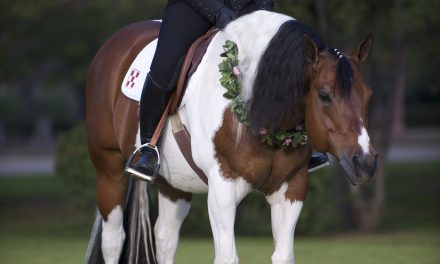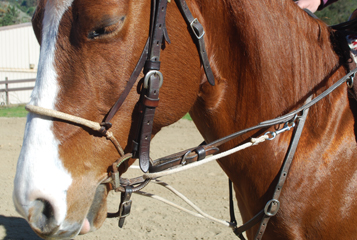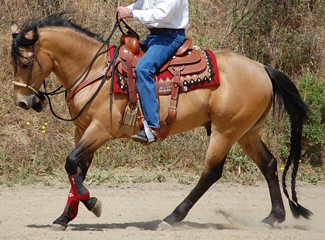Notes From Julie
Julie’s Blog and Thoughts:
 Reflecting on the best of 2012: We’ve taped, edited and aired 116 episodes of Horse Master since 2008. Oddly enough, even though I work with hundreds of horses and riders each year at clinics and expos, I can still look at the list of episodes and remember each horse and rider I’ve worked with on the TV show over the past five years. And don’t forget, you can watch episodes on my online channel at http://TV.JulieGoodnight.com.
Reflecting on the best of 2012: We’ve taped, edited and aired 116 episodes of Horse Master since 2008. Oddly enough, even though I work with hundreds of horses and riders each year at clinics and expos, I can still look at the list of episodes and remember each horse and rider I’ve worked with on the TV show over the past five years. And don’t forget, you can watch episodes on my online channel at http://TV.JulieGoodnight.com.
Perhaps it is because I get to work with the horses and riders one-on-one when we are taping the show or perhaps it is because I watch the show again in the editing phase and once again when it airs that I can remember each one so well. Or maybe it’s because we work hard to find the best story in each episode—the one that is most compelling and the one the audience will benefit from most—and that isn’t always the topic the person stated in his or her application to be on the show.
Move Forward Freely
Take for instance the barrel racer in episode 501, “Forward Progress.” It was supposed to be an episode about a young competitive rider who wanted to improve her times, but it turned out to be on one of the most basic fundamentals: that forward movement is the basis of all training.
The young lady in this episode stands out in my mind as an excellent rider—very brave while riding a wild and crazy horse—and the recipient of some very bad horse training advice. Anytime she would ask the horse to move forward, it would take off running and bucking across the arena until she picked up on one rein, pulled its neck into a pretzel shape and disengaged the hindquarters. Once she let the horse have its head, the whole thing would start over again. Honestly, she couldn’t go 4-5 strides without disengagement.
I jumped on this topic in a hurry because it’s one of my biggest pet peeves about so called “natural horsemanship:” the over-use of the one-rein stop. It is not the answer to everything, and I’ve seen many horses that I would say are terrorized daily by this idea. Ask it to go somewhere, and then jerk its head to the side and tangle up its feet. I’ve seen plenty of horses at their wits’ end when disengagement is over-used. Although it can come in real handy at times, too much of a good thing is a bad thing, and a horse has to move freely forward before training can begin.
The good news is that both the horse and rider in this episode did really well, and once the young rider understood what to do, they both made tremendous progress. Once she got the horse to move forward without restriction and contradiction, they developed trust in each other and went on to do good things. I love it when helping a rider turns out to help a horse.
Position Yourself for Success
Another episode that really stands out in my mind from the last year is episode 513, “Positioned for Success.” Like the barrel racer, this horse seemed to be a problem—too fast, won’t stop, won’t slow down, but in actuality, all that needed to change was the rider.
Mike was fairly new to riding and had purchased an older Arabian at auction because the horse was reported to be well-trained and reliable. Clearly, the horse’s past included endurance racing because once you pointed him down the trail, he was all-business—hell-bent for leather, even though that was not Mike’s intention.
Once I rode him, I was immediately enamored of this horse, and I could tell he was a good soul with a lot of miles on him. But because Mike was a novice rider and didn’t know much about correct position, and because he felt like the horse would be taking off with him, he had developed some defensiveness in his position: legs braced forward and hauling back on the reins. This almost always makes the horse go faster.
It was amazing to see the transformation in both horse and rider once Mike’s position was corrected and I showed him how to use his weight to slow down instead of constantly pulling on the reins. The results were almost immediate, and by the time we taped the conclusion of the show the next day, both Mike and his horse had found a new appreciation for each other as they went casually down the trail on a loose rein.
Are you beginning to see why I love my job?
Reward the Correct Response
One of the horses that stands out most in my mind from 2012, was a little Paso Fino who was supposedly deathly afraid of plastic (episode 521, “Plastic Makes Me Spastic”). Often the picture I see in the horse does not compute with the explanation coming out of the owner’s mouth—and this episode was the perfect case in point.
He was a mature and well-trained gelding—very fiery like a Paso Fino should be, but also very smart, thinking and well-mannered. Everything I saw in this horse told me he was trying his best to do the right thing. It didn’t take long for me to decipher the problem—the horse was not afraid of plastic, it was running away anytime plastic was presented to him because that is what he had been inadvertently trained to do. People train the wrong response into horses all the time.
Although horses are one of the most sensitive mammals, they are also the most easily desensitized. It should happen fairly quickly (as it did in this show, once the correct technique was used). If desensitization doesn’t happen quickly, then something is going wrong and you may be ingraining a fear response into the horse instead of eliminating fear.
With most horse training issues the critical factor is the timing of the release of pressure. Whatever your horse is doing at the moment you release him is what you just trained him to do. What they had done with this sweet little gelding is release the pressure every time the horse showed a fear response, thus rewarding the fear response. Eventually, the horse came to believe that what he was supposed to do was run like crazy anytime he saw a plastic bag.
As you can see from watching this episode, in a matter of minutes I was rubbing plastic all over him and waving it in his face while he stood still and relaxed. He was a very smart and willing horse—often the most misunderstood kind of horse. He did not want to run or be afraid, he just wanted to do what was expected of him. It’s all in the timing of the release.
Most of the training problems people have with their horses are really quite common: The same issues come up again and again, and these are the topics we try to cover in Horse Master. What we are all tempted to describe as a horse problem, the horse would probably describe as a human problem if he could.
Looking back over the past five years of Horse Master, I remember so many cool horses and great people, both on the cast and crew. Time and time again, it’s amazing how a little bit of information and a few small corrections in technique can cause such huge results in a short amount of time.
I’m looking forward to all the horses and riders I’ll meet in 2013 and helping them work better together. Until then…
Enjoy the ride!
Julie
Sidebar
Watch Horse Master Online
Julie Goodnight’s top-rated horse training show on RFD-TV is now available online, with valuable training videos available whenever you need them. With well over 100 episodes covering different horse training topics, you’ll find video lessons on almost any topic from halter training a 2-month-old filly to flying lead changes. Twenty-four new episodes are added each year, so you’ll have access to the latest shows, too. You’ll see Julie’s one-on-one help in each show as she helps a different horse and rider achieve horsemanship goals in any discipline. Visit http://TV.JulieGoodnight.com for more information.
For more about Julie Goodnight’s training, watch her whole library of training advice and topics with her new online video channel (http://tv.JulieGoodnight.com) or catch Horse Master broadcast on RFD-TV every Monday at 12:30 and 10:30p EST – Direct TV channel 345, Dish Network channel 231 and on many cable outlets. Visit http://juliegoodnight.com/clinics for the clinic schedule. Sign up for the free monthly newsletter at: http://juliegoodnight.com/emailsignup.php. Goodnight is proud to recommend Myler Bits, Nutramax Laboratories, Circle Y Saddles, Redmond Equine, The Equine Feed Oat Project, and Spalding Fly Predators. Goodnight is the spokesperson for the Certified Horsemanship Association.
Contact:
Julie Goodnight Horsemanship Training
Goodnight Training Stables, Inc.
PO Box 397
Poncha Springs, CO 81242
press@juliegoodnight.com
(719) 530-0531
Julie Goodnight takes on topics you want to know more about in her blog. Here she reflects on the Horse Master TV show episodes she remembers most. For more thoughts from Julie, watch her Horse Master TV show each Monday and Saturday night on RFD-TV and read more from her blog at http://juliegoodnight.com/blog.




